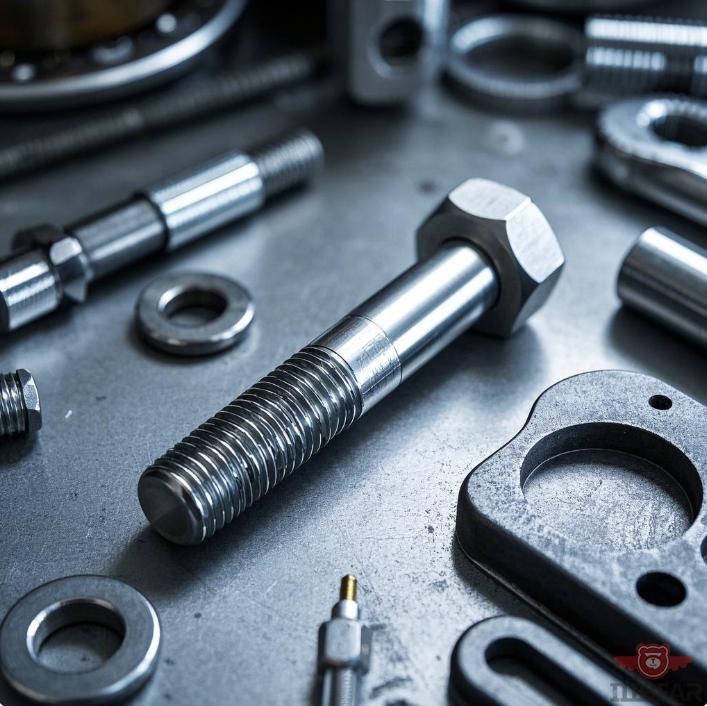What Makes Aerospace Fasteners Different? Key Features, Materials, and Applications
Aerospace fasteners are a critical component in the aviation and space industries, where precision, reliability, and safety are non-negotiable. Unlike standard fasteners used in everyday applications, aerospace fasteners are designed to withstand extreme conditions, including high stress, temperature fluctuations, and corrosive environments. In this article, we’ll explore what makes aerospace fasteners unique, the materials they’re made from, and their essential role in ensuring the safety and performance of aircraft and spacecraft.

1. Stringent Standards and Certifications
Aerospace fasteners are subject to some of the most rigorous standards in the manufacturing world. Organizations like the Federal Aviation Administration (FAA), European Aviation Safety Agency (EASA), and International Organization for Standardization (ISO) set strict guidelines for their design, production, and testing.
-
Material Certification: Every batch of raw materials used in aerospace fasteners must be traceable and certified to meet specific aerospace-grade standards.
-
Testing Requirements: Fasteners undergo extensive testing, including tensile strength, fatigue resistance, and corrosion resistance tests, to ensure they can perform under extreme conditions.
-
Traceability: Each fastener must have a unique identifier to track its manufacturing history, ensuring accountability and quality control.
These standards ensure that aerospace fasteners meet the highest levels of safety and reliability, which are critical in an industry where failure is not an option.
2. Specialized Materials for Extreme Conditions
The materials used in aerospace fasteners are carefully selected to withstand the unique challenges of aviation and space environments. Common materials include:
-
Titanium Alloys: Known for their high strength-to-weight ratio, titanium alloys are ideal for aerospace applications where weight reduction is crucial. They also offer excellent corrosion resistance.
-
Inconel: This nickel-chromium-based superalloy is used in high-temperature environments, such as jet engines, due to its ability to maintain strength under extreme heat.
-
Stainless Steel: Often used in applications requiring corrosion resistance, stainless steel fasteners are commonly found in aircraft exteriors and landing gear.
-
Aluminum Alloys: Lightweight and cost-effective, aluminum alloys are used in less critical areas where weight savings are a priority.
These materials are chosen not only for their mechanical properties but also for their ability to perform consistently in harsh environments, such as high altitudes, rapid temperature changes, and exposure to chemicals.
3. Unique Design Features
Aerospace fasteners are engineered with specific design features to enhance their performance and reliability:
-
Thread Locking Mechanisms: To prevent loosening due to vibrations, aerospace fasteners often incorporate thread locking features, such as nylon patches or chemical adhesives.
-
Lightweight Design: Weight reduction is a key consideration in aerospace engineering. Fasteners are designed to be as light as possible without compromising strength.
-
High Precision: Aerospace fasteners are manufactured to extremely tight tolerances, ensuring a perfect fit and optimal performance in critical applications.
-
Corrosion Resistance: Coatings like cadmium plating or anodizing are applied to protect fasteners from corrosion, which is a significant concern in aerospace environments.
These design features ensure that aerospace fasteners can meet the demanding requirements of modern aircraft and spacecraft.
4. Critical Applications in Aerospace
Aerospace fasteners are used in a wide range of applications, each with its own set of challenges:
-
Aircraft Structures: Fasteners are used to assemble the fuselage, wings, and tail sections, where they must withstand aerodynamic forces and vibrations.
-
Jet Engines: In engines, fasteners are exposed to extreme temperatures and pressures, requiring materials like Inconel and specialized coatings.
-
Spacecraft: In space exploration, fasteners must endure the vacuum of space, radiation, and temperature extremes, making material selection and design even more critical.
-
Landing Gear: Fasteners in landing gear must handle high impact forces and resist corrosion from exposure to moisture and de-icing chemicals.
These applications highlight the importance of using fasteners that are specifically designed for aerospace environments.
5. The Future of Aerospace Fasteners
As the aerospace industry continues to evolve, so do the demands on fasteners. Emerging trends include:
-
Smart Fasteners: Incorporating sensors to monitor stress, temperature, and other factors in real-time, enabling predictive maintenance and improving safety.
-
Additive Manufacturing: 3D printing is being explored for producing custom fasteners with complex geometries and reduced weight.
-
Sustainable Materials: The industry is increasingly focusing on eco-friendly materials and manufacturing processes to reduce environmental impact.
These innovations are set to further enhance the performance and reliability of aerospace fasteners, ensuring they meet the needs of next-generation aircraft and spacecraft.
Conclusion
Aerospace fasteners are a vital component in the aviation and space industries, distinguished by their stringent standards, specialized materials, and unique design features. From aircraft structures to spacecraft components, these fasteners play a critical role in ensuring safety, performance, and reliability. As the industry continues to advance, innovations like smart fasteners and additive manufacturing are poised to shape the future of aerospace fasteners.

